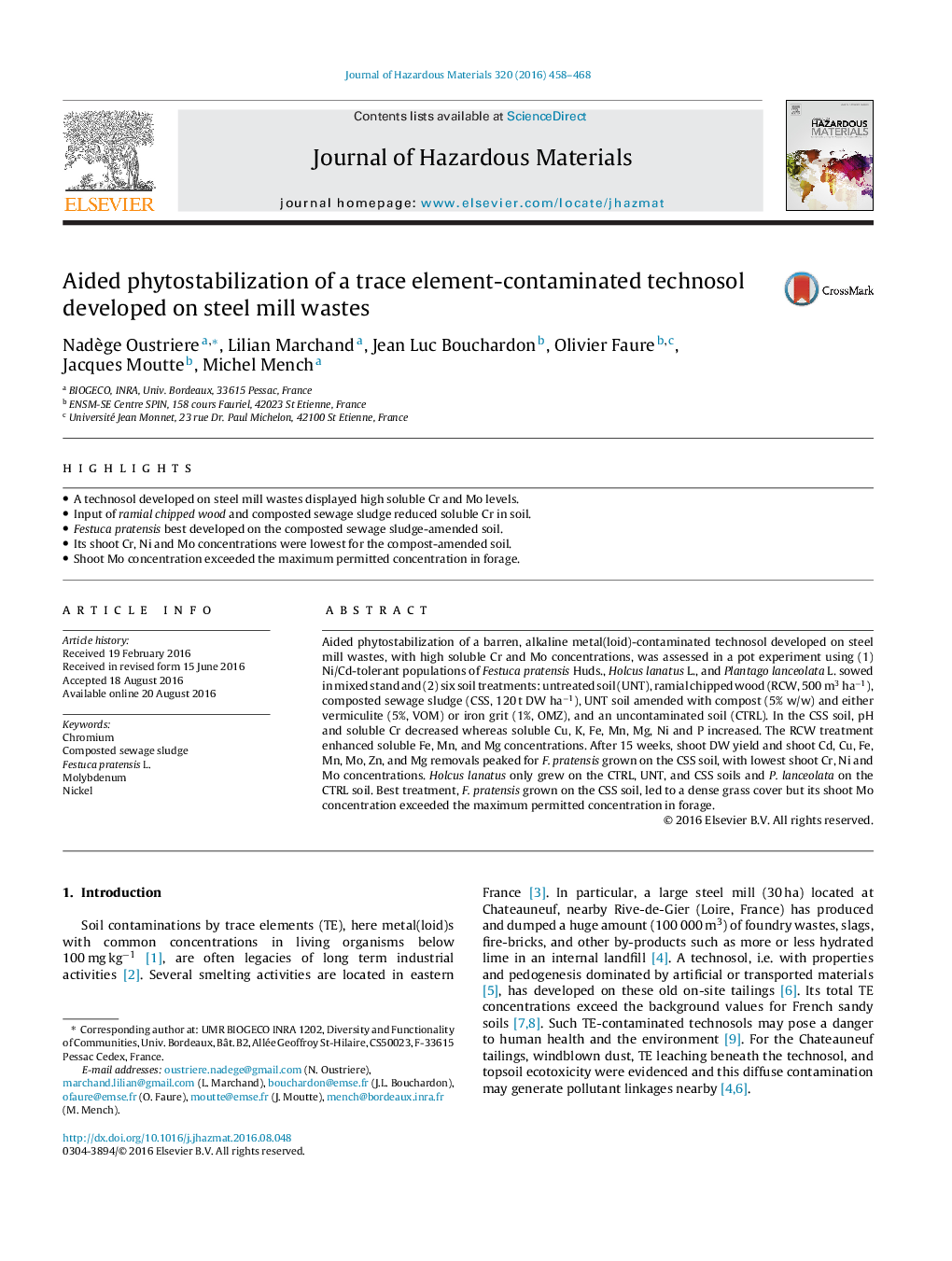| Article ID | Journal | Published Year | Pages | File Type |
|---|---|---|---|---|
| 6969661 | Journal of Hazardous Materials | 2016 | 11 Pages |
Abstract
Aided phytostabilization of a barren, alkaline metal(loid)-contaminated technosol developed on steel mill wastes, with high soluble Cr and Mo concentrations, was assessed in a pot experiment using (1) Ni/Cd-tolerant populations of Festuca pratensis Huds., Holcus lanatus L., and Plantago lanceolata L. sowed in mixed stand and (2) six soil treatments: untreated soil (UNT), ramial chipped wood (RCW, 500Â m3Â haâ¿¿1), composted sewage sludge (CSS, 120Â t DW haâ¿¿1), UNT soil amended with compost (5% w/w) and either vermiculite (5%, VOM) or iron grit (1%, OMZ), and an uncontaminated soil (CTRL). In the CSS soil, pH and soluble Cr decreased whereas soluble Cu, K, Fe, Mn, Mg, Ni and P increased. The RCW treatment enhanced soluble Fe, Mn, and Mg concentrations. After 15 weeks, shoot DW yield and shoot Cd, Cu, Fe, Mn, Mo, Zn, and Mg removals peaked for F. pratensis grown on the CSS soil, with lowest shoot Cr, Ni and Mo concentrations. Holcus lanatus only grew on the CTRL, UNT, and CSS soils and P. lanceolata on the CTRL soil. Best treatment, F. pratensis grown on the CSS soil, led to a dense grass cover but its shoot Mo concentration exceeded the maximum permitted concentration in forage.
Related Topics
Physical Sciences and Engineering
Chemical Engineering
Chemical Health and Safety
Authors
Nadège Oustriere, Lilian Marchand, Jean Luc Bouchardon, Olivier Faure, Jacques Moutte, Michel Mench,
